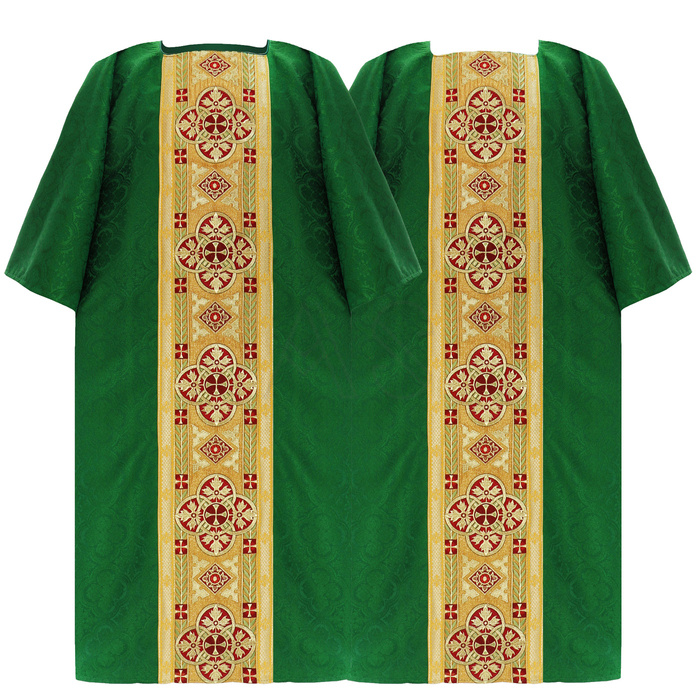Types of liturgical vestments - for what occasions and how to distinguish between them?

Church ceremonies require the priest to dress appropriately. There are many occasions in the liturgical year when vestments of the correct type and colour are worn. A specific dress code applies not only to the priest but also to everyone who attends Mass or any other celebration.
What do priests, deacons, bishops and altar servers wear?
One of the basic liturgical vestments is the alb. It is white, reaches down to the feet and has long sleeves. It usually serves as the base of many vestments and is worn by priests, deacons, bishops and others who participate in the rite. A shortened alb is the surplice worn by altar servers. Priests who celebrate Mass wear a chasuble, which may have one of several colours depending on the nature of the celebration. Deacons who have not yet been ordained wear a dalmatic, which differs from the chasuble in that it has wide sleeves, among other things.
Other parts of the vestments of priests and deacons
Other elements of the liturgical vestment are the amice, a rectangular white cloth tied around the chest, and the stole, a long decorated sash of the same colour as the chasuble. The way the stole is worn helps to distinguish priests from deacons - priests wear it hanging freely from the neck, while deacons wear it diagonally from the left shoulder to the right. The outfit is completed by a cincture, a fringed belt used to tie the alb. During processions and the administration of the sacraments, a liturgical cope - a type of decorative cape fastened around the neck - is worn over the shoulders. On a daily basis, priests wear black cassocks.
How are liturgical vestments chosen for different occasions?
The priest's clothes, or more precisely the colour of the vestments, is used to distinguish the periods of the liturgical calendar. Depending on the feast being celebrated, priests wear vestments in the colours:
• green,
• purple,
• red,
• white,
• black,
• pink.
The most common is the green vestment, typical of the Ordinary Time, Sunday Masses and those celebrated on weekdays. During Advent, Lent and at funeral masses, purple vestments are worn to indicate mourning. Pink is reserved for the third Sunday of Advent and the fourth Sunday of Lent. Black, on the other hand, can be used at Masses for the dead.
The red and white chasubles have more specific rules for wearing. White, a symbol of joy and purity, is the typical colour for the Easter and Nativity seasons. Priests also wear it on All Saints' Day, on the feast of St John the Baptist (24 June), St John the Evangelist (27 December), the Conversion of St Paul (25 January) and the Chair of Saint Peter (22 February), and also for wedding ceremonies. There are also white-blue vestments and the all-blue vestments typical of Marian feasts.
Red vestments are reserved for Passion Sunday, also known as Palm Sunday, Good Friday and Pentecost. It is also the colour of the feasts in honour of the Passion of Christ, the main feasts of the Apostles, Evangelists and Martyrs. In addition to these, gold vestments can also be found, replacing all others (except purple and black).
